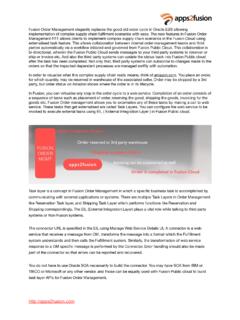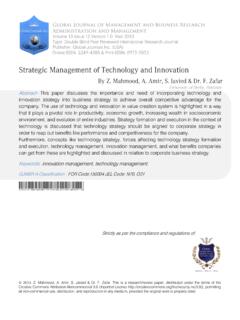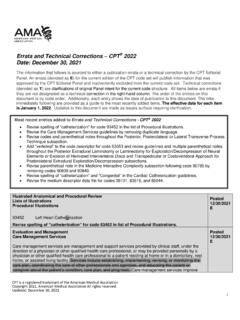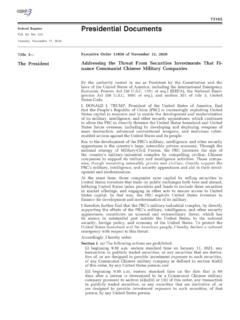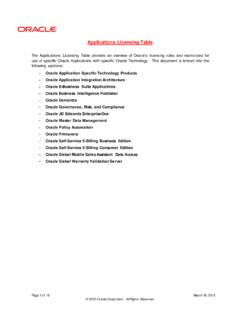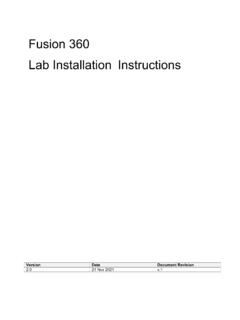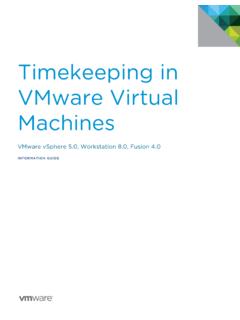Transcription of SCRIPTING GUIDE AND REFERENCE MANUAL
1 SCRIPTING GUIDE AND REFERENCE MANUALF ebruary 2016 DELIVERY2 SCRIPTING GUIDE AND REFERENCECONTENTSFUSION SCRIPTING GUIDE AND REFERENCE MANUALF usion 8 About this Document 5 Target Audience 5 Requirements 5 Conventions 61 SCRIPTING GUIDE 7 Introduction 9 Quick Start Tutorial 10 SCRIPTING Languages 14 Lua 14 Python 15 SCRIPTING and Debugging 22 Console 22 Types of Scripts 23 Interactive Scripts 23 External Scripts 24 Events & Callbacks 25 InTool Scripts 28 Simple Expressions 29 Fuses 29 fusion s Object Model 30 Overview 30 Common Object Dependencies 30 Attributes 39 Object Data 40 Metadata 42 Graphical User Interfaces 43 DELIVERY3 SCRIPTING GUIDE AND REFERENCECONTENTSFUSION SCRIPTING GUIDE AND REFERENCE MANUALF usion 82 SCRIPTING REFERENCE 48 Class Hierarchy 51 REFERENCE 52 BezierSpline 52 BinClip 55 BinItem 55 BinManager 56 BinStill 57 ChildFrame 57 ChildGroup 59 Composition 59 FloatViewFrame 94 FlowView 95 FontList 98 FuFrame 99 fusion 102 FuView 126GL3 DViewer 127 GLImageViewer 127 GLPreview 129 GLView 129 GLViewer 13 8 Gradient 141 GraphView 142 HotkeyManager 14 4 Image 14 4 ImageCacheManager 14 6 IOClass 147 KeyFrameView 148 DELIVERY4 SCRIPTING GUIDE AND REFERENCECONTENTSFUSION SCRIPTING GUIDE AND REFERENCE MANUALF usion 8 Link 148 List 149 Loader 149 MailMessage 149 MenuManager 153 Object 153 Operator 153 Parameter 171 PlainInput 172 PlainOutput 179 PolylineMask 181 Preview 182 QueueManager 183 Registry 191 RenderJob 197 RenderSlave 201 ScriptServer 204 SourceOperator 204 TimeRegion 204 TransformMatrix 2053 Index 208 DELIVERY5 SCRIPTING GUIDE AND REFERENCEFUSION SCRIPTING GUIDE AND REFERENCE MANUALThis document is divided into two sections: The SCRIPTING GUIDE and the SCRIPTING REFERENCE .
2 The first section, the SCRIPTING GUIDE , explains the SCRIPTING application programming interface (API) of fusion called FusionScript. It can be accessed via Lua or the Python programming language. FusionScript can be utilized to automate repetitive or complex tasks, customize the application behavior, extend fusion s functionality, or exchange data with third-party applications. This GUIDE contains information on how to get started, the differences of SCRIPTING languages, how the API is laid out to represent the application model, and how to deal with it in second section, the SCRIPTING REFERENCE , assumes you have an understanding of the SCRIPTING concepts and the fundamentals of SCRIPTING from the first section. The SCRIPTING REFERENCE describes the common API, its objects, members, arguments and usage. In order to write custom tools or extend fusion s core functionality, refer to the C++ SDK or Fuse documentation.
3 For regular customization and Macros, read the corresponding chapter in the fusion User AudienceThis document is intended for developers, technical directors, and users knowledgeable in programming. It was by no means written to teach programming concepts and does not act as a REFERENCE for programming languages. Please refer to the documentation of the respective language as advised in the chapter SCRIPTING Languages. However, when possible practical examples will be given and complete tutorials show the most common applications of order to follow this GUIDE , you will need to have a copy of Blackmagic Design fusion 8 few features only available in fusion 8 Studio are highlighted, while every other sample will work with the regular version of fusion 8. In order to utilize Python, the C-based version of Python needs to be installed as explained in detail in the chapter SCRIPTING source code of both SCRIPTING languages needs to be stored as plain text, which can be written in any non-formatting text processor like Notepad or TextEdit.
4 It is recommended to make use of a dedicated code editor to benefit from syntax highlighting and language-specific this DocumentDELIVERY6 SCRIPTING GUIDE AND REFERENCEFUSION SCRIPTING GUIDE AND REFERENCE MANUALC onventionsImportant notes will be featured in text boxes like this:Code is introduced in boxes with a monospaced font like this:print( Hello World from fusion ! ) -- Writes text to the consoleRegular text may refer to code statements inline, which is also represented by a monospaced font, , the statement print in this sentence:The statement print writes text to the examples shown in the GUIDE are only excerpts of the full source code and may not be able to work on their own. This helps to make the GUIDE more readable. However, all passages marked as Tutorial will contain full source code examples are shown in Lua. Inline statements show the Lua implementation of the particular statement; as with Lua, it is easier to identify properties and methods.
5 In order to not mix up Lua tuples with Python tuples, the generic term collection is used to describe tuples, list, dictionaries, code here is written for teaching purposes. Sometimes things that could be refactored into separate methods are written explicitly or in a non-optimized way. Please do not hesitate to add your own talent to the code after the fundamental concepts of the API are consistency reasons naming convention follows roughly the naming of the API (cameCase) for both Lua and Python. Feel free to adapt to PEP8 or your own convention the Introduction chapters before continuing with the Guide8 SCRIPTING GUIDE1 fusion SCRIPTING GUIDE AND REFERENCE MANUALI ntroduction 9 Quick Start Tutorial 10 SCRIPTING Languages 14 Lua 14 Python 15 SCRIPTING and Debugging 22 Console
6 22 Types of Scripts 23 Interactive Scripts 23 External Scripts 24 Events & Callbacks 25 InTool Scripts 28 Simple Expressions 29 Fuses 29 fusion s Object Model 30 Overview 30 Common Object Dependencies 30 Attributes 39 Object Data 40
7 Metadata 42 Graphical User Interfaces 43 Content9 SCRIPTING GUIDE1 fusion SCRIPTING GUIDE AND REFERENCE MANUALWhat is SCRIPTING ? SCRIPTING is interpreting the specific programming language in theory line by line or in the form of compiled bytecode as opposed to executing precompiled machine code directly. Without going too deep into implementation details, it can be concluded that due to its nature, a complex application like fusion can act as host and provide access to its functionality through a dedicated SCRIPTING API. The SCRIPTING environment wraps the underlying API and is less likely to crash the whole application if third-party code is defective. Code can be changed on the fly without restarting the host application.
8 Additionally, a garbage collector does most of the memory management in common SCRIPTING environments. All this results in slower evaluation compared to native compiled code, but the performance is still beyond what can be done by a user with the regular graphical user interface. The JustInTime (JIT) flavor of Lua that is utilized in fusion is especially known to perform almost as fast as native code in many cases. Ultimately, SCRIPTING allows for any programmer to mix the language features and libraries of the SCRIPTING language with the functionality of the host application. This allows an integration of third-party data or s examine practical uses of SCRIPTING within fusion by example. SCRIPTING in production may help with: > Automation: For example, read all media files from a given folder, for each of these, load them into a composition, add a watermark, scale them, and render them to a specific location.
9 > Repetitive tasks: For example find all savers in a composition and set their state to pass-through. > Maintaining conventions: For example making sure the paths of the savers always point at a specific location on the server, and follow a specific naming convention. > Tasks prone to human error: For example, verify that certain settings are set before sending a composition to rendering. > Extending core features in the application: For example, importing animation data from a third-party application. > Behavior that needs customization for specific pipeline: For example, override what happens when certain events occur. It may enforce certain tools to show up when a specific tool was created. > Communication with a third-party application: For example, not only exchange data but also share events. When a specific pipeline tool triggers to create a shot, create the corresponding are just examples of common applications.
10 Some scripts may require an interface in order to adapt its behavior to a particular need. This may be a configuration file or information derived from the applications state (maybe the current selected tool in the composition). But in many cases, a Introduction10 SCRIPTING GUIDE1 fusion SCRIPTING GUIDE AND REFERENCE MANUAL graphical user interface with a custom dialog that shows all the possible options for the behavior is needed. The latter will be examined in detail in the Graphical User Interfaces fusion , the SCRIPTING API called FusionScript gives access to the most required functionality from the application. In order to fully utilize FusionScript, a basic understanding of how fusion works is needed. Once this model is known, it will be easier to travel through the SCRIPTING REFERENCE in order to find a needed FusionScript, almost any aspect of fusion can be accessed and controlled, whether it be the composition and its tools, rendering, metadata, settings, and attributes or the FusionScript is only an abstract API, it allows access via different SCRIPTING languages most notably the Lua Programming Language, which is embedded in fusion or, if installed separately, the Python Programming Language.





